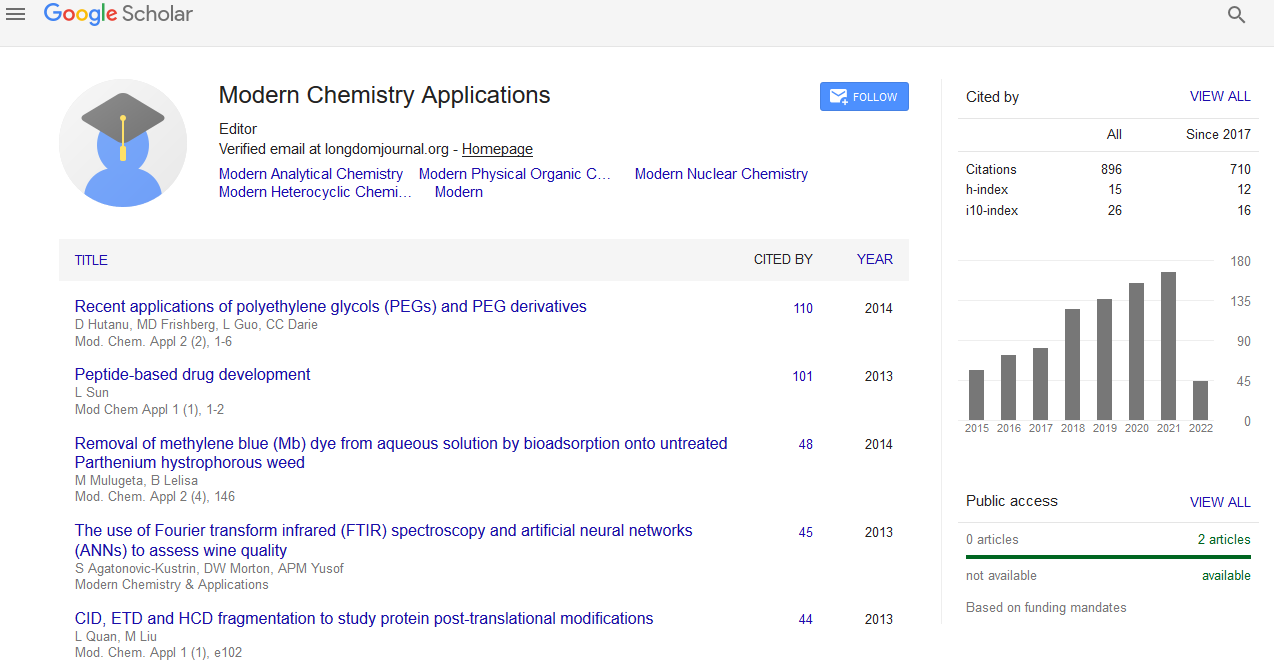Indexed In
- Open J Gate
- JournalTOCs
- RefSeek
- Hamdard University
- EBSCO A-Z
- OCLC- WorldCat
- Scholarsteer
- Publons
- Geneva Foundation for Medical Education and Research
- Google Scholar
Useful Links
Share This Page
Journal Flyer

Open Access Journals
- Agri and Aquaculture
- Biochemistry
- Bioinformatics & Systems Biology
- Business & Management
- Chemistry
- Clinical Sciences
- Engineering
- Food & Nutrition
- General Science
- Genetics & Molecular Biology
- Immunology & Microbiology
- Medical Sciences
- Neuroscience & Psychology
- Nursing & Health Care
- Pharmaceutical Sciences
Abstract
Health Risk Assessment Indices and Diseases Suffered by the Dwellers around Asphalt Quarry Sites in Abia State, Nigeria
Charles IO,ÃÂ Martin IO, Iwuoha GN and Obuzor GU
This research work is a novel effort towards studying the effect of quarry activities on: concentration of heavy metals in the soil around two quarry sites and leaves of Telfairia occidentalis and Amaranthus spinosus as well as health risk assessment indices and diseases suffered by the dwellers around the quarry sites in Abia State, Nigeria. Geo-accumulation index (Igeo) rating indicated that all topsoil samples analyzed ranged from practically uncontaminated to moderately contaminate for most heavy metals except for nickel which was extremely polluted within 200 m around the quarry sites and arsenic which were strongly polluted within 100 m around the quarry sites. Contamination factor assessment implicated high level of contamination of the soil sample with lead. Other heavy metals studied showed low degree of contamination at points X and Y for the both quarry sites. The concentrations of the various metals also showed a wide range of variation in leaves with variable patterns in the order: Zn>Cu>Pb>Cr>Ni>Cd>As>Hg; Telfairia occidentalis and Zn>Cu>Pb>Cr>Ni>Cd>As>Hg; Amaranthus spinosus leaves. The bioaccumulation factor (BF) of the eight heavy metals in Amaranthus spinosus and Telfairia occidentalis revealed that these vegetables around both sites were poor accumulators of of the heavy metals studied. The daily intake of heavy metals ascribed to the consumption of the vegetables studied indicated low risk for humans as direct consumers. Comparing the health risk assessment parameters with standards from WHO, total agreement could not be obtained as some values beyond the allowable limit of the WHO standards were portrayed as safe level by the health risk assessment parameters.


